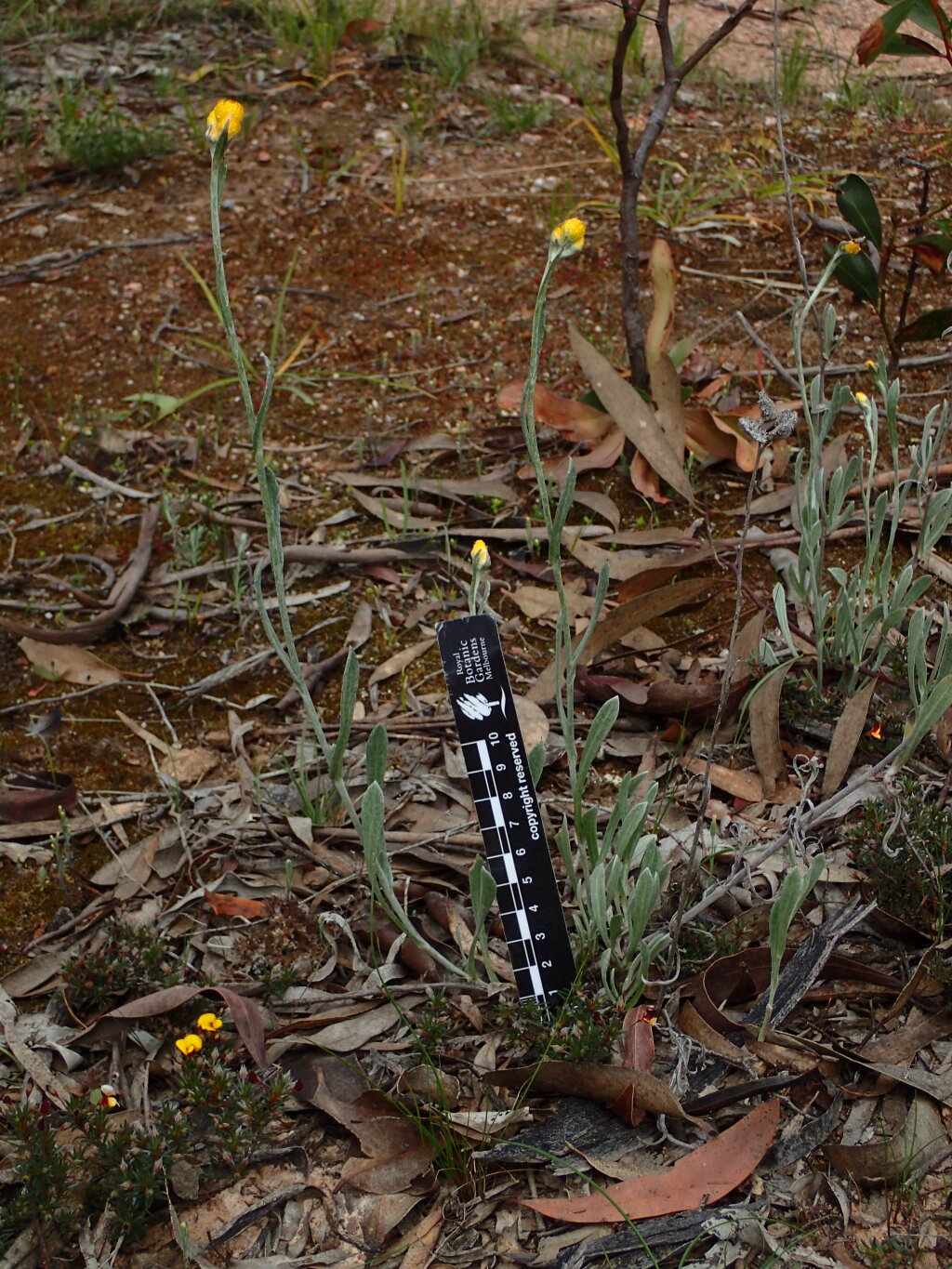Chrysocephalum apiculatum
(Labill.) Steetz Common EverlastingAscending to erect perennial herb to 60 cm high; stems and branches cottony or cobwebbed. Leaves oblanceolate to obovate, 2–6 cm long, 5–25 mm wide, acuminate to rounded, apiculate, base often stem-clasping, margins flat or recurved, surfaces cottony, sometimes more densely beneath. Capitula 3–many, often in corymbose clusters, campanulate to obconical, 10–15 mm diam.; involucre c. 10-seriate, 7–11 mm long; bracts ciliate; outer bracts sessile, wholly golden-yellow or tinged brown, rarely white tinged pink; intermediate bracts longest, erect, long-clawed, c. as long as florets. Florets female and bisexual. Cypselas 0.5–1 mm long; pappus 3–4 mm long, yellow. Flowers mostly spring and summer.
LoM, MuM, Wim, GleP, Brid, VVP, VRiv, MSB, RobP, MuF, GipP, OtP, WaP, Gold, CVU, GGr, DunT, NIS, EGL, EGU, WPro, HSF, HNF, OtR, MonT, VAlp. Also SA, Qld, NSW, Tas. Widespread and sometimes locally common, particularly in western Victoria, often near the coast or inland in grasslands, heathlands or grassy woodlands.
An extremely variable species, 29 subspecies have been elucidated in a recent revision of Chrysocephalum apiculatum, 9 of which are recorded in Victoria (Wilson 2016). Boundaries between subspecies may not always be clear, and apparent overlap in the distributions of some taxa may further complicate identification of individuals. Moreover, some forms may not be readily distinguished from C. semipapposum (see note under that taxon).
Currently the distribution and ecological preferences of subspecific taxa are poorly understood.
Number (and subtle differences in morphology) of pappus bristles of the female florets (the outer two rows of florets) may be useful in the discrimination of some taxa. Care should be taken interpreting this character as florets may vary in pappus bristle number within a single head. The outermost row of female florets often has fewer bristles than those in the inner row. Likewise, the bisexual florets often have many more bristles than the female florets.
Jeanes, J.A. (1999). Asteraceae. In: Walsh, N.G.; Entwisle, T.J., Flora of Victoria Vol. 4, Cornaceae to Asteraceae, pp. 652–666. Inkata Press, Melbourne.
 Spinning
SpinningWilson, P.G. (2016). A taxonomic treatment of Chrysocephalum apiculatum and C. semipapposum (Asteraceae: Gnaphaliae).. Nuytsia 27: 33–73.



